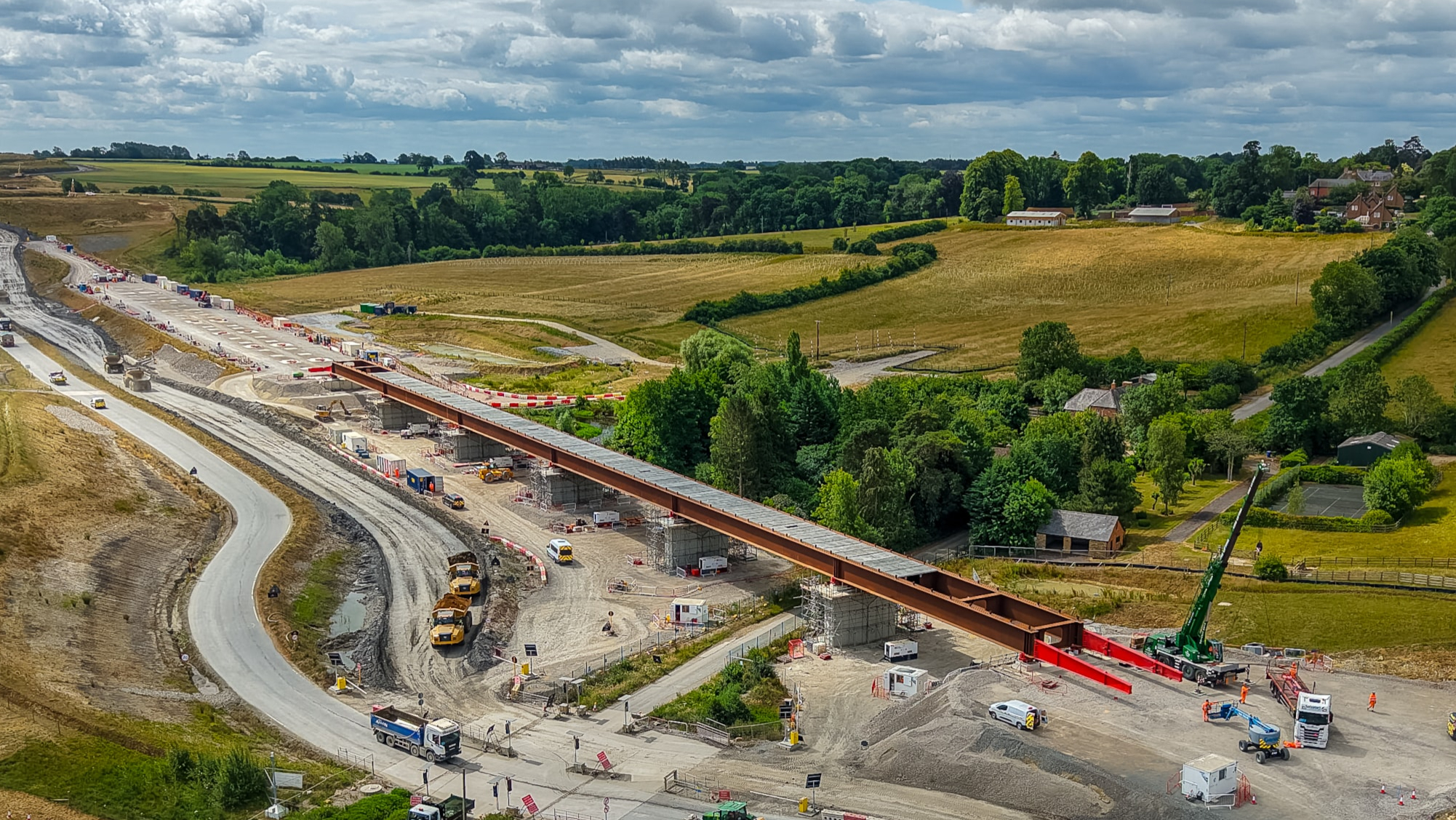HS2 has completed a three-day operation to slide a 1,300-tonne viaduct deck into position near the Northants village of Thorpe Mandeville.
The steel and concrete deck of the Lower Thorpe viaduct – which stretches for 220m – was assembled to one side before being slid into position in just three days, reaching the north abutment on 20 June.

Set into a valley, the viaduct will carry high speed trains across Banbury Lane and help manage flood risk by ensuring that rainwater can continue to run off into existing watercourses. Made of a distinctive russet-coloured weathering steel, it has been designed to help match the natural tones of the surrounding countryside.
It is the last of five viaducts being built using this technique by HS2’s main works contractor responsible for the central section of the new railway, EKFB - a team made up of Eiffage, Kier, Ferrovial Construction and BAM Nuttall – working with specialists at Eiffage Metal.
With the steelwork now in position, engineers can begin the next stage of the operation, lowering the deck 60cm onto the permanent bearings before work on the concrete deck and parapets can begin.
EKFB is delivering 15 major viaducts for HS2 between the Chilterns and South Warwickshire.
As well as similar installation techniques, the five viaducts also share a novel ‘double composite’ structure which uses significantly less carbon-intensive concrete and steel than a more traditional design.
EKFB’s technical director, Janice McKenna, said: “The strategic design approach applied to these double composite structures has been a game-changer in how we’re building these viaducts. The double composite solution can be applied to multiple structures in different locations, and we have five across EKFB’s 50-mile route that are all well into construction.
“The philosophy was to design the viaducts with architectural input to 'blend' the structures into their respective landscapes and reduce the visual impact on the environment. We also required a solution that offered specific delivery benefits too, from saving embedded carbon in the materials we use, to enhancing productivity on site and reducing safety risk.”
Once complete, the viaduct will carry high speed trains between London and the West Midlands, improving journeys between the UK’s two largest cities and freeing up space on the existing mainline for more freight and local services.
The other four double composite viaducts – Wendover Wean, Small Dean, Westbury and Turweston – are all at a later stage of construction.
Click here to view video footage of the viaduct slide.

